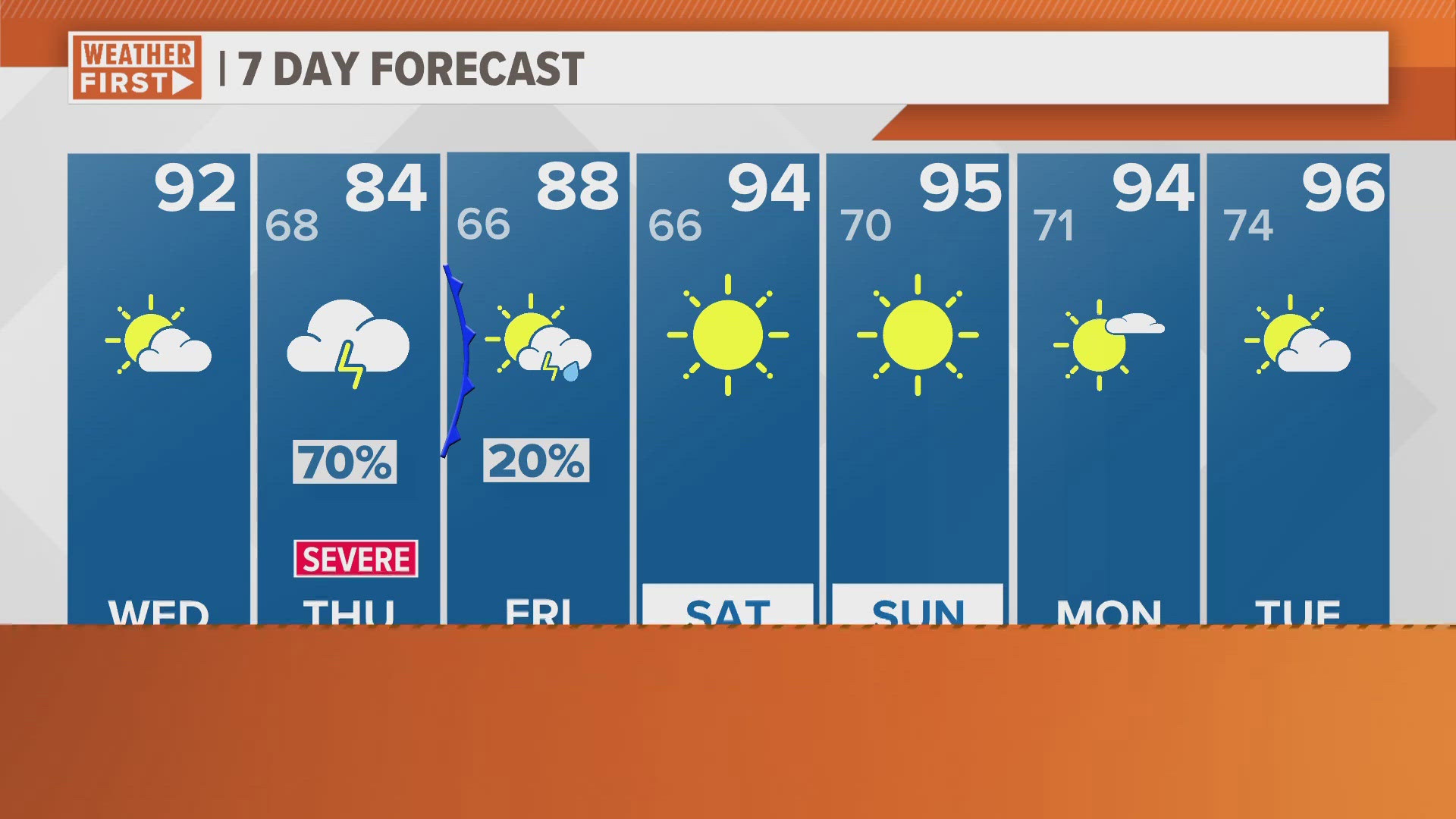AUSTIN, Texas — Springtime is short in the South, while summer is long, hot and seemingly never-ending. Transitioning into spring, you'll hear many folks talk about the UV index as the days start to get warmer and brighter.
For the past two days, the Austin UV index has been in the "very high" category.

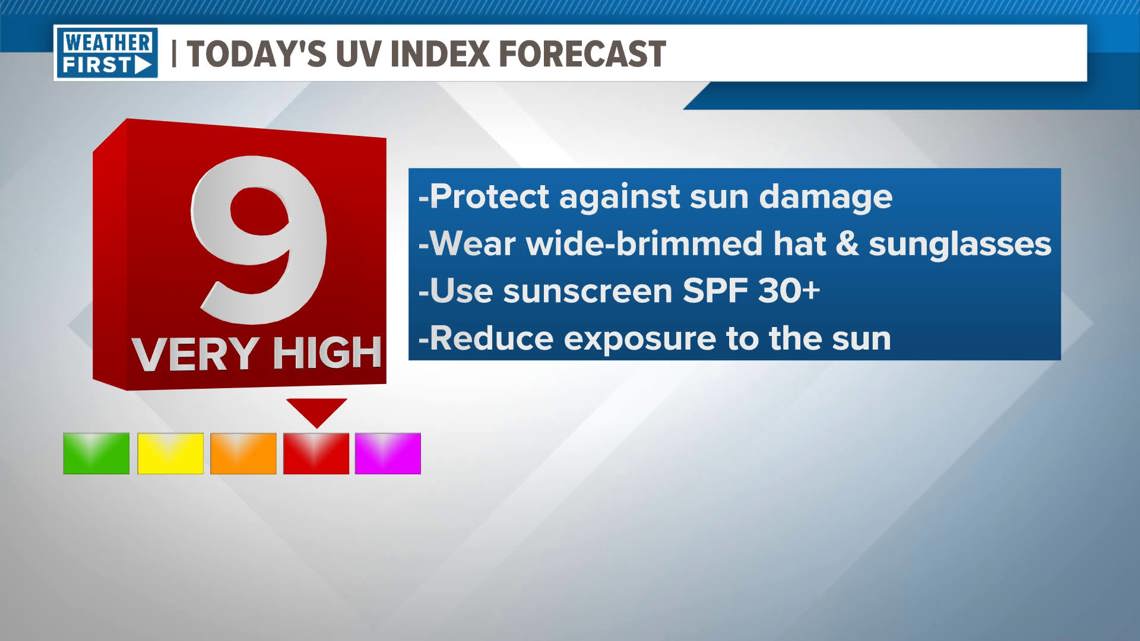
Many people link the UV index to how dark of a tan they can get, which isn't entirely wrong, but there is a little more that goes into the scale than that.
The National Weather Service and the Environmental Protection Agency created the UV Index in 1994 to help people avoid overexposing themselves to UV radiation on a daily basis.
The simplest definition of the UV index is a measure of the ultraviolet radiation reaching the Earth's surface. The higher you go on the UV scale (1-11+), the more likely you are to overexpose yourself to sun radiation.
The most common identifier of this is getting sunburned, but consistent overexposure will lead to worse health conditions, like skin cancer and eye damage.

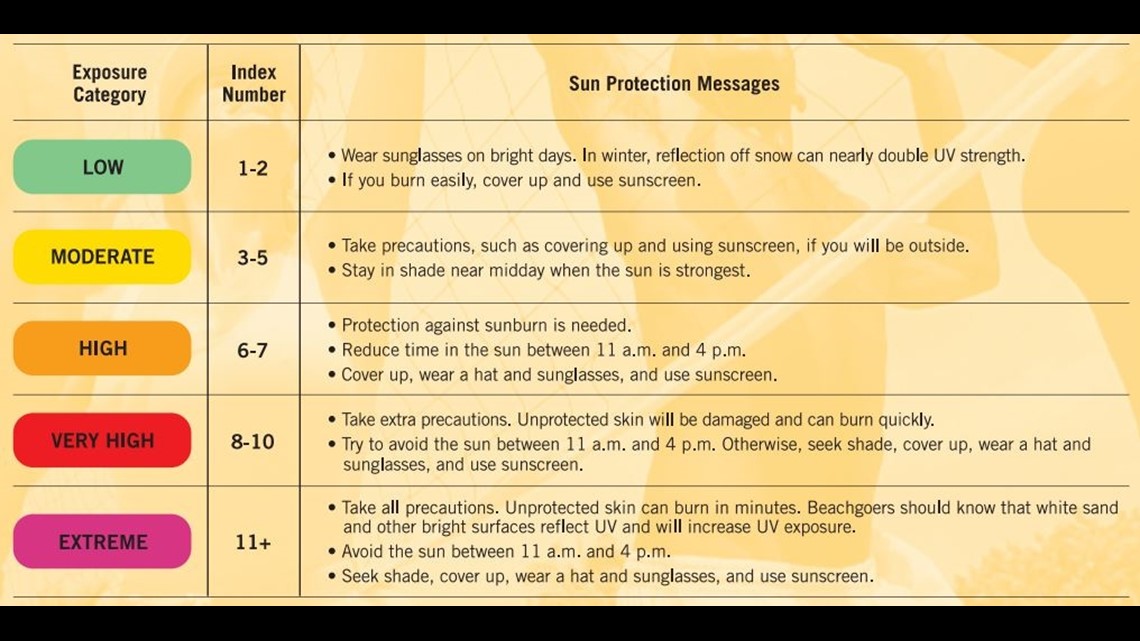
The exposure categories range from low to extreme, with corresponding index numbers ranging from 1 to 11+. Depending on conditions, the UV index number can go well above 11.
According to the National Institute of Water and Atmospheric Research, the greatest UV index number ever recorded was 43 in Bolivia, and some locations along the Andes Mountain Range consistently record index numbers around 25.
Here in the U.S., it is hard for our UV Index numbers to go above the 10-12 range, but that is still considered extreme. The UV Index number is calculated based on a series of everchanging variables; a few examples are cloud cover, ozone levels and the sun angle at solar noon.

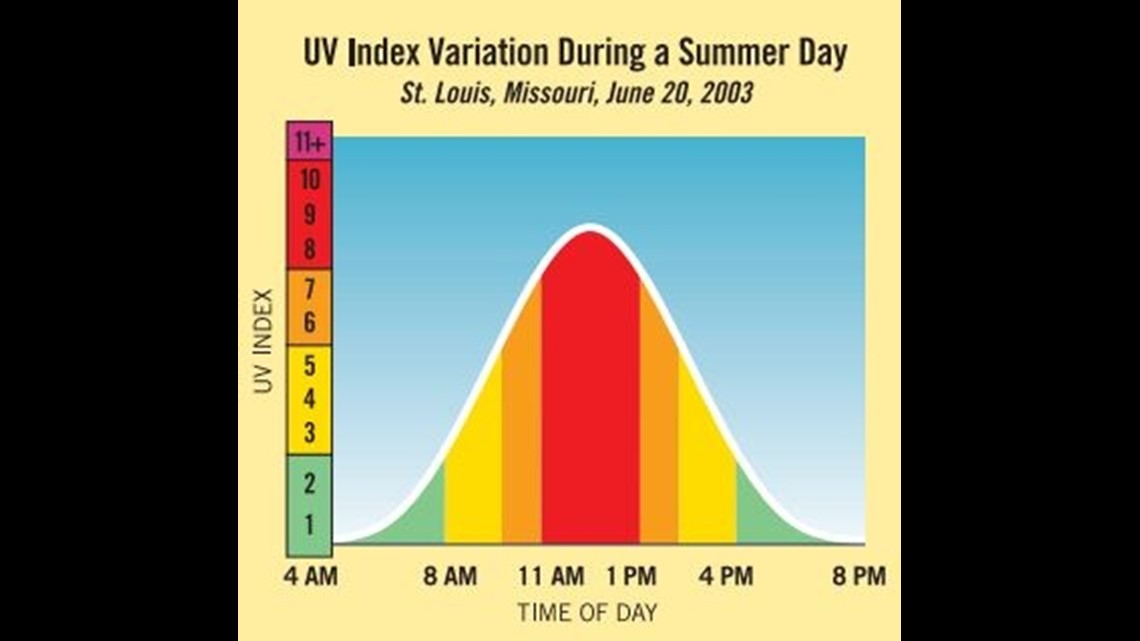
When you see a UV index forecast for the day, unless otherwise stated, that number is what the UV number is expected to be at solar noon. Solar noon is the portion of any given day when that sun is highest in the sky (therefore strongest). Just as sunrise and sunset times change daily, solar noon changes too.
What are the best ways to prevent overexposure?
First, take into account your outdoor surroundings and the activity you are participating in. Certain activities will increase your ultraviolet exposure more than others.
Hiking up a mountain on a bright sunny day will be a higher-risk activity than a neighborhood walk on a cloudy day.
If the UV index number is in the low or moderate category (1-2, 3-5) unless you are very sensitive to the sun, the majority of people will be OK to be outside for long stretches of time without tons of protection.

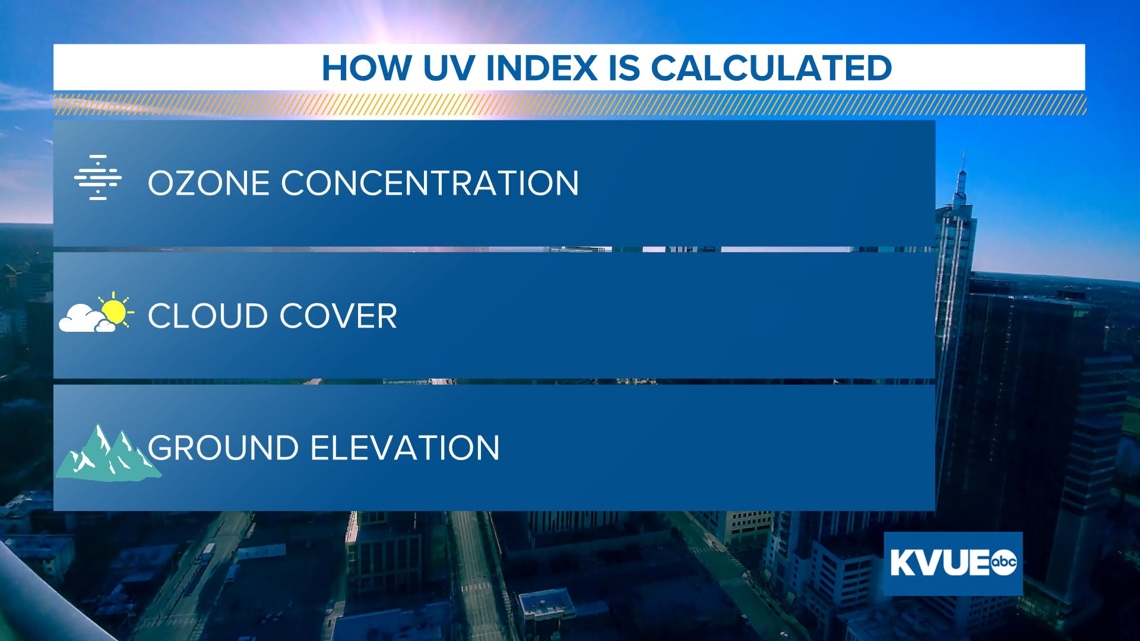
However, keep in mind, if you are surrounded by snow or water, the reflection of UV rays off those surfaces can double the UV radiation reaching your skin.
People think if they can't feel the sun's heat on their skin, they won't burn, but in reality heat and UV radiation are not related – hence the ski goggles tan after you get off the slopes.
When the UV Index number increases into the high or very high category or surpasses it, that is when sun protection is necessary. If a 6-11+ is being forecasted, go ahead and pack a good sunscreen, SPF 30 or greater, limit your length of time in the sunlight, cover up in thick but breathable fabrics (UV rays can reach your skin through thin fabrics), and cover your head and eyes with wide hats and sunglasses.

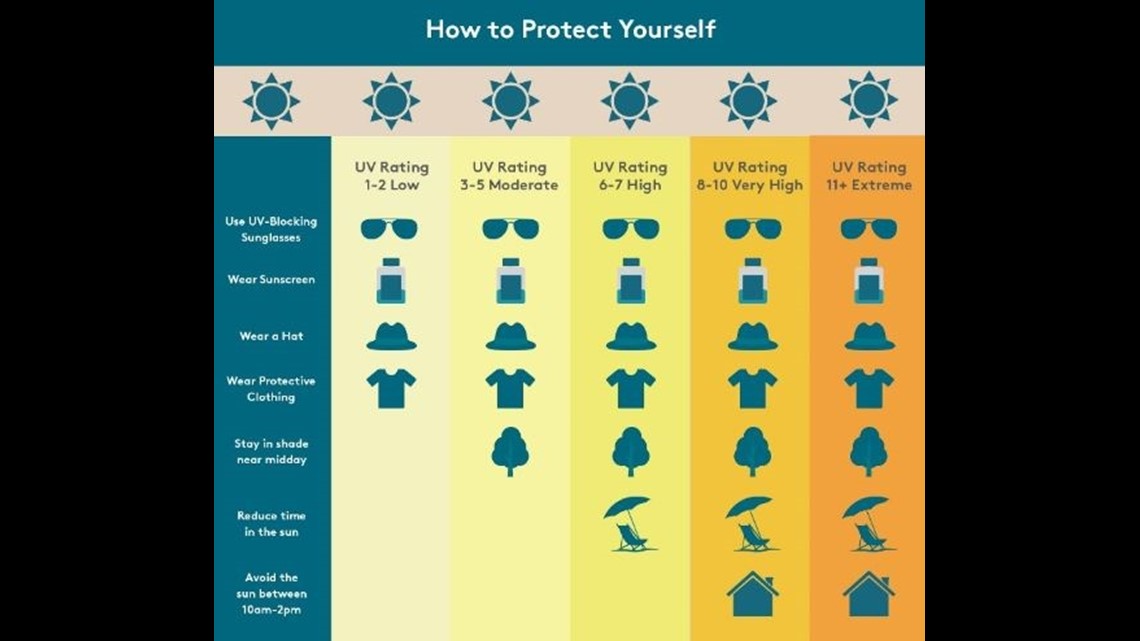
Our seven-day forecast this week shows temperatures in the mid- to upper 90s with lots of sunshine by next week, so be sure to follow the guidelines above as we head into late May for the ultimate UV protection.



